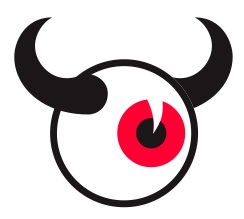Over the last 2 years we have seen growing interest in Augmented Reality in various events – panels, dev camps, meetups – and many more. Due to growing demand for knowledge and expertise in augmented reality (AR), a group of AR industry insiders, backed by the AR Consortium have put together the first commercial event dedicated to advance the business of augmented reality.
How is are2010 different from ISMAR…
…previously touted here as the “World’s best Augmented Reality event”?
Well, ISMAR is still the best AR event for the scientific community. If you want to learn about (or present) the latest advancements in AR research – you should be in Seoul this October for ISMAR 2010. However, for the rest of us, who wish to take advantage of AR in practice, in the commercial world, and build a business around it – there was a gaping hole.
That is, until now.
Meet the Augmented Reality Event.
Who’s this event for?
For established and start up AR companies –
For established and start up AR companies (such as Total Immersion, Metaio, Acrossair, Ogmento, Circ.us, Mobilizy, Layar, Zugara, Neogence, whurleyvision, Chaotic Moon Studios, and many more) – are2010 is a stage to showcase their products and services; a venue to form partnerships, learn about latest innovations, and most importantly speak with clients. Bruno Uzzan, CEO of Total Immersion will wow the audience with a cutting edge augmented reality show; Peter Meier, CTO of Metaio, will speak about his companies latest products. Early stage startups and individual developers will receive guidance from Cole Van Nice (Chart Venture Partners) for how to build a successful company in the AR space, including raising funding (from VCs that actually invest in AR), licensing technology and IP, legal aspects, forging partnerships, etc. Christine Perey will speak about the scope of the mobile AR industry today and it’s growth trajectory.
For Developers –
For developers, are2010 is a window into the latest AR algorithms, engines and programming tools. Learn from case studies and post mortems delivered by experienced developers from the leading companies in the space. Blair MacIntyre, director of the GVU Center’s Augmented Environments Lab at Georgia Tech, will speak about his experience with tools and technologies while developing augmented reality games. Daniel Wagner, one of the leading mobile AR researchers in the world, will bring developers into the wonderful world of mobile AR. Patrick O’Shaughnessey, which has lead the development of more webcam-based AR campaigns than anyone else I know – will share his knowledge of what works and what doesn’t. Mike Liebhold, Distinguished Fellow at the Institute for the Future , will speak about Technology foundations of an Open ARweb. Gene Becker, co-founder of AR DevCamp, will dive into augmented reality and ubiquitous computing, and Sean White, a pioneer in Green Tech AR will suggest concrete examples of how AR can help save the planet
For Mobile, Hardware, and Platform Companies
For Mobile, Hardware, and Platform companies (such as Vuzix, Nokia, Qualcomm, Intel, QderoPateo, Microsoft, Google, Apple etc.) are2010 consists of a captive audience to launch and showcase their latest devices, processors, AR glasses, sensors, etc. The best collective minds of the AR commercial world will be onsite to articulate the market demand characteristics and help influence the design of future hardware.
For Clients and Agencies –
For clients and agencies in entertainment, media, publishing, education, healthcare, government, tourism, and many more – are2010 offers everything you need to know about AR: how to leverage augmented reality to advance your brand, attract and keep your customers, and how to build successful campaigns and products that will delight users, including postmortems of landmark augmented reality projects.
Jarrell Pair, CTO and a founder of LP33.tv, will speak about “Augmented Reality in Music Entertainment: Then and Now”, Brian Selzer, co-founder and President of Ogmento, will deliver a crash course for clients and agencies about how to leverage AR in marketing campaigns. Marshal Kirkpatrick, lead blogger for ReadWriteWeb, will share the results of his AR survey collecting feedback from dozens of AR developers and their experience in delivering AR campaigns and apps. Kent Demain, designer of the visual effects in Minority Report, will open our minds with the talk: “Taking Hollywood visual effects spectacle out of the theatre and into your world”. And of course…
For any AR Enthusiast –
Are you an AR Enthusiast? If so, you’re going to feel like a kid in a candy store at ARE, with a soon-to-be unforgettable keynote by Bruce Sterling, demo gallery, exhibitors from leading companies, artists installations from AR artists such as Eric Gradman and Helen Papagiannis, and many more surprises.
If you are into Augmented Reality – are2010 is the one event you should attend this year.
Want to join the event? Early registration is now open!
Filed under: AR Events | Tagged: AcrossAir, Apple, augmented reality event, Blair MacIntyre, Brian Selzer, Bruce Sterling, Bruno Uzzan, Circ.us, Daniel Wagner, Eric Gradman, Gene Becker, Google, Helen Papagiannis, Intel, Jarrell Pair, Layar, Marshal Kirkpatrick, Metaio, Microsoft, Mobilizy, Neogence, nokia, ogmento, Patrick O’Shaughnessey, Peter Meier, Qdero, Qualcomm, total immersion, Vuzix, Whurleyvision, Zugara | 2 Comments »



![Reblog this post [with Zemanta]](https://i0.wp.com/img.zemanta.com/reblog_e.png)






